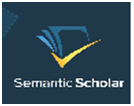An Intelligent Analysis and Prediction of Employee Attrition Rate in Healthcare Using Machine Learning Techniques
DOI:
https://doi.org/10.54938/ijemdcsai.2024.03.1.352Keywords:
Employee attrition, Healthcare, Machine learning, Random Forest, K-nearest Neighbor, XGBoost, Support Vector Machine, SMOTETOmek.Abstract
In the increasingly competitive business environment of the twenty-first century, organizations try to retain their most valuable employees. In the healthcare sector especially, Attrition rates among employees are being affected by a new situation that has arisen as a result of the COVID-19 pandemic and remote working scenarios. Attrition refers to the process by which employees depart from a business for any reason, including their own choice of leave. The application of artificial intelligence (AI) in the past for business expansion and advancement has started influencing human resource management. Improvements to models that predict employee attrition are a constant goal of machine learning (ML) researchers. These models can predict the results of employee turnover, but they have one major drawback: they are mostly used on datasets on attrition in non-healthcare settings. In this study, we offer an exploratory study of using machine learning methodologies to predict employee attrition in healthcare, using the SVM, KNN, XGBoost, RF, and SMOTETOMEK resampling techniques to make healthcare attrition prediction more accurate using the Kaggle dataset of healthcare employees. This gave the healthcare sector a chance to change the narration of cause’s employees leaving the system. The effectiveness of the model was assessed using the area under the curve (ROC), accuracy, recall, and precision metrics. The findings indicate that the SMOTETOMEK Random Forest model exhibits a 98.0% accuracy rate, outperforming the other classification models.
Downloads
Published
How to Cite
License
Copyright (c) 2024 International Journal of Emerging Multidisciplinaries: Computer Science & Artificial Intelligence

This work is licensed under a Creative Commons Attribution 4.0 International License.















